Advertisement
Advertisement
Have you shopped for suspension lately? It’s ridiculous. Even just Googling the word suspension has you overwhelmed. Hundreds of brands. Thousands of options. Endless marketing departments all focused on making you buy their suspension. “Outback tourer or weekend warrior? It doesn’t matter, you need to buy Product X!” I mean, is foam in your shocks a good thing anyway?
To help cut through the mud we’ve put together a glovebox guide with not only what you need to know about suspension components, but what specifically you should be buying for your needs. Is this the definitive guide to suspension? Absolutely not. You don’t want to read 10,000 words about Ackermann Or why the front-end suspension of a LandCruiser is fundamentally flawed for off-road use. Instead, this is a cheat sheet on what type of suspension you should be eyeing off for your pride and joy.
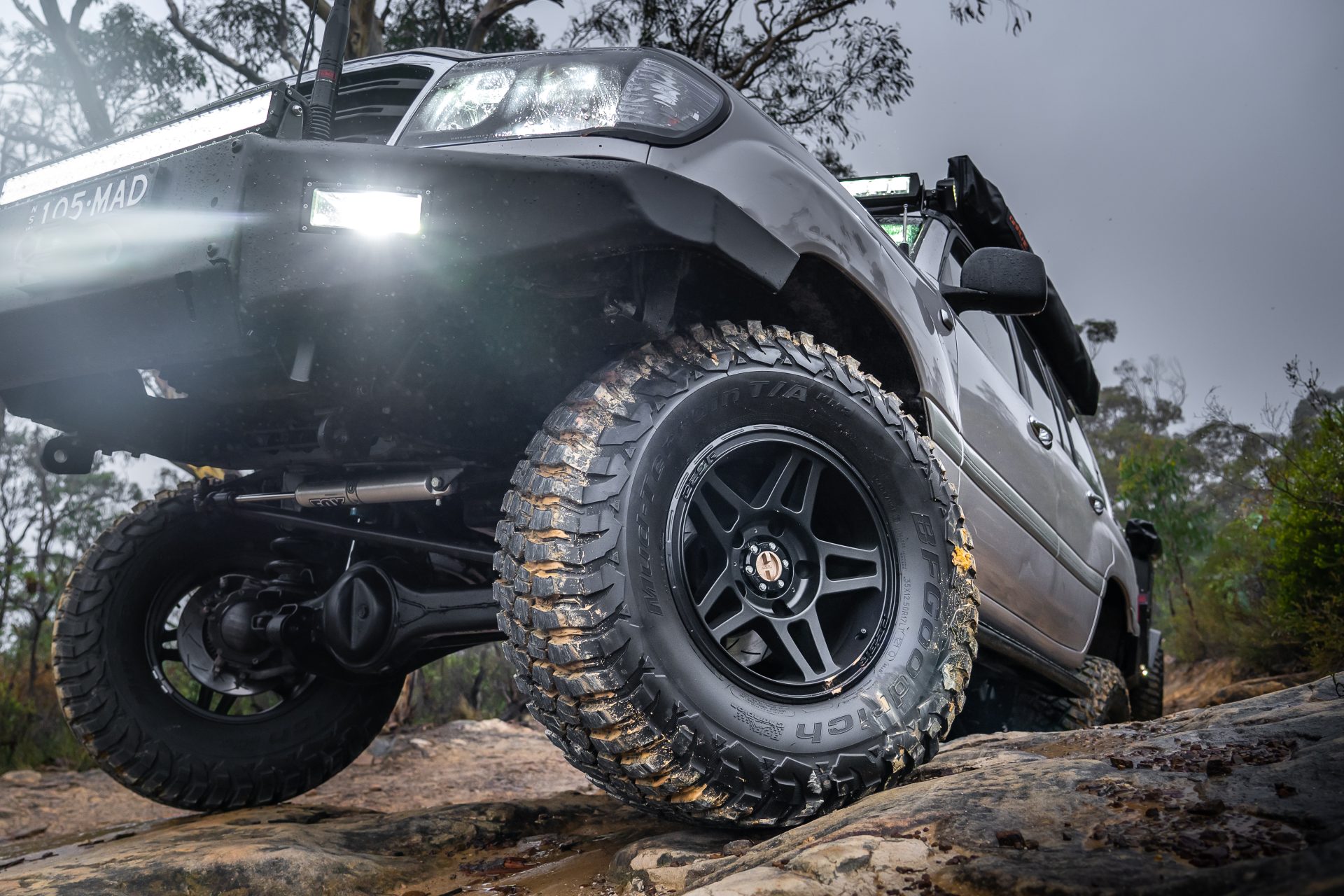
Know what a shock is but not how it works? Read on my friend.
Put simply, these absorb the shocks. Simple, right? Remember those old pogo sticks you’d bounce up and down on? Without a shock absorber that’s exactly what your 4×4 would ride like. While it would no doubt be hilarious, it would also be about as dangerous as being a blind bomb technician. Shock absorbers work a bit like a coffee plunger, pushing a piston with holes in it through oil. The fancier the shock, the fancier the piston and oil. If the oil gets hot it starts to turn cavitate and aerate allowing it to pass through the piston easier. Foam cells and remote reservoir simply aim to stop that problem from occurring.
Springs are simple, they hold the weight of your 4×4 off the ground. The more your 4×4 weighs, the higher rating your springs need to be. Leaf springs, coil springs, or coilovers make no difference to the spring’s job, just to how it achieves it. As a general rule, coil springs ride smoother, leaf springs carry weight better, and coilovers show people you have too much money.
If you’ve ever driven an old 4×4 that felt like a boat, you’ve experienced body roll. Much like your washing machine flings your clothes to the outside, centrifugal force has a bad habit of making our 4x4s tip the opposite way to which we’re turning. The harder you turn, or the more weight up top thanks to roof top tents, the harder the tip. A sway bar is designed to stop that affect by joining the inside and outside wheels together. As the outside wheel applies force to the swaybar, the swaybar applies that force to the inside wheel in an attempt to even the two out.
This is where suspension gets REAL complicated, but it doesn’t have to from a consumer level. Arms, or links as they’re sometimes called, simply join the chassis to whatever your wheel is bolted to. Typically a solid axle in the rear and a hub in the front. They’re responsible for how your suspension behaves, goofing up the angles can make your front end lift under braking, induce body roll, and even cause you to slide sideways if you come into a corner too hot. In short, they’re important. From factory, they’re designed to work at stock height, and under moderate conditions. If you’re lifting more than an inch or two, or driving in harsh conditions you’ll need adjustable or heavy duty versions.
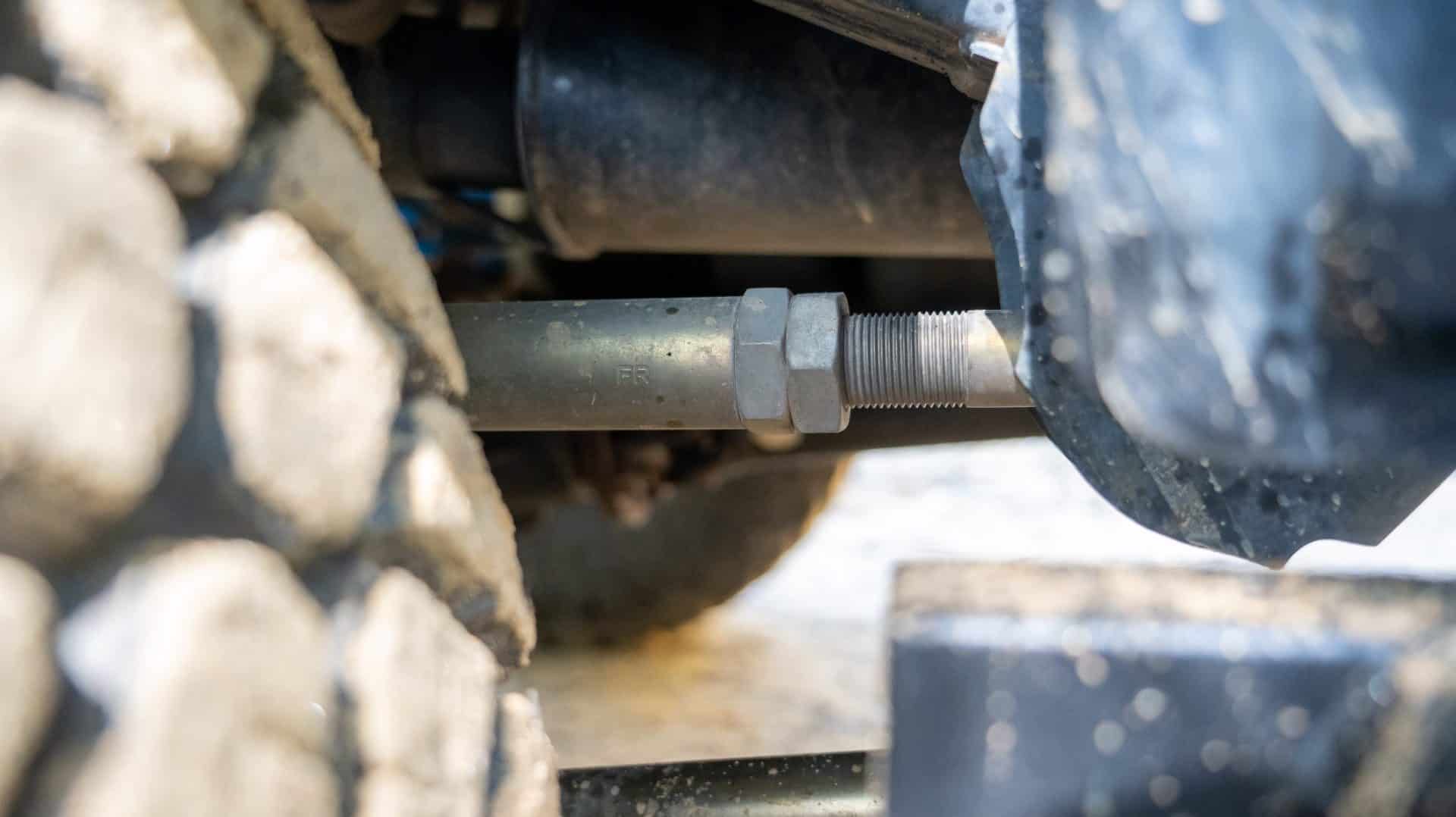
No one is going to know your specific needs without talking to you, but there are a few generalisations we can make to help point you in the right direction. The needs for someone who lives on the road full time in their Patrol with a caravan in tow are very similar to someone who travels full time in their HiLux towing a camper.
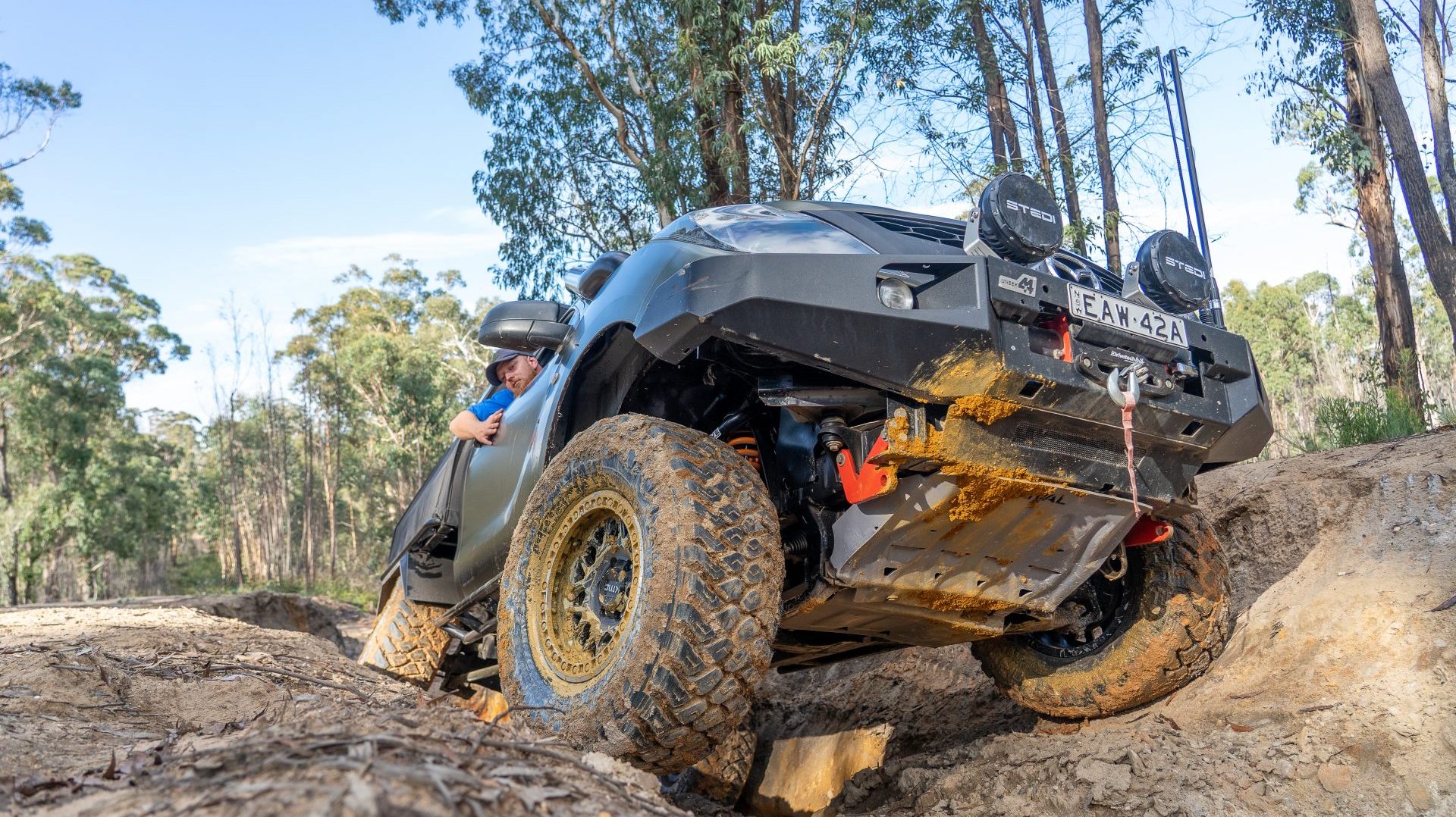
The hardcore weekender lives and breathes wild weekends in the bush. Their rigs are huge, the tracks are gnarly, and the mere sight of their project rolling down the street is enough to make Tracey Grimshaw shake in her boots. The hardcore weekender will typically gravitate towards a solid axle rig for extreme articulation, but as dual cab utes like the HiLux N70 become more affordable they’re going under the knife more and more.
Articulation is the name of the game on hardcore tracks. If it doesn’t help, it isn’t worth the money. If it does? Get ready to swipe the credit card, you’re not playing a cheap game. The longer your wheels stay on the ground, the more stable you’ll be off-road, and the further you’ll go without needing a winch or locker.
You’ll need to sacrifice load carrying ability. Stiffer springs to cope with heavier loads will flex like a brick. Likewise, the factory swaybars will hold you back, at least without quick disconnects fitted to them. Your rig might serve daily duties, but you’re more than happy to put up with a little extra body roll if it means you can make it up Widow Maker without needing a winch.
Fancy shocks and big lifts won’t help you on slow tracks. Big tyres, low centre of gravity, and maximum articulation should be what you’re thinking about before swiping the credit card. Aftermarket arms should be your first port of call. They’ll eliminate factory bind points and allow your suspension to articulate far greater than stock could dream of. With a solid axle that’s going to be real expensive, but give big results.
With an independent front suspension (IFS) setup it’ll be limited to a set of aftermarket upper control arms. Springs should be as light duty as possible. And shocks need to be focused on their travel rather than their fancy features. Ironically, old school twin-tube shocks can travel more for a given length, can keep working after being smashed into a rock, and are some of the cheapest shocks you can buy. If you’ve got leaf springs it’s all about softening them up and increasing leverage on them. Big shackles help, but long springs and more shackle angle will be required to really make them work.
Throw in a locker and some aggressive tyres and you’ll be unstoppable off-road. Low, wide, and all the flex in the world is a recipe for tackling every track you can point your bull bar at.
Articulation doesn’t come cheap, so expect to spend big on arms and steering components to make it all work correctly. You’ll lose a little bush cred by running budget shocks so feel free to max out the old AfterPay account if looking good is as important as performing well.
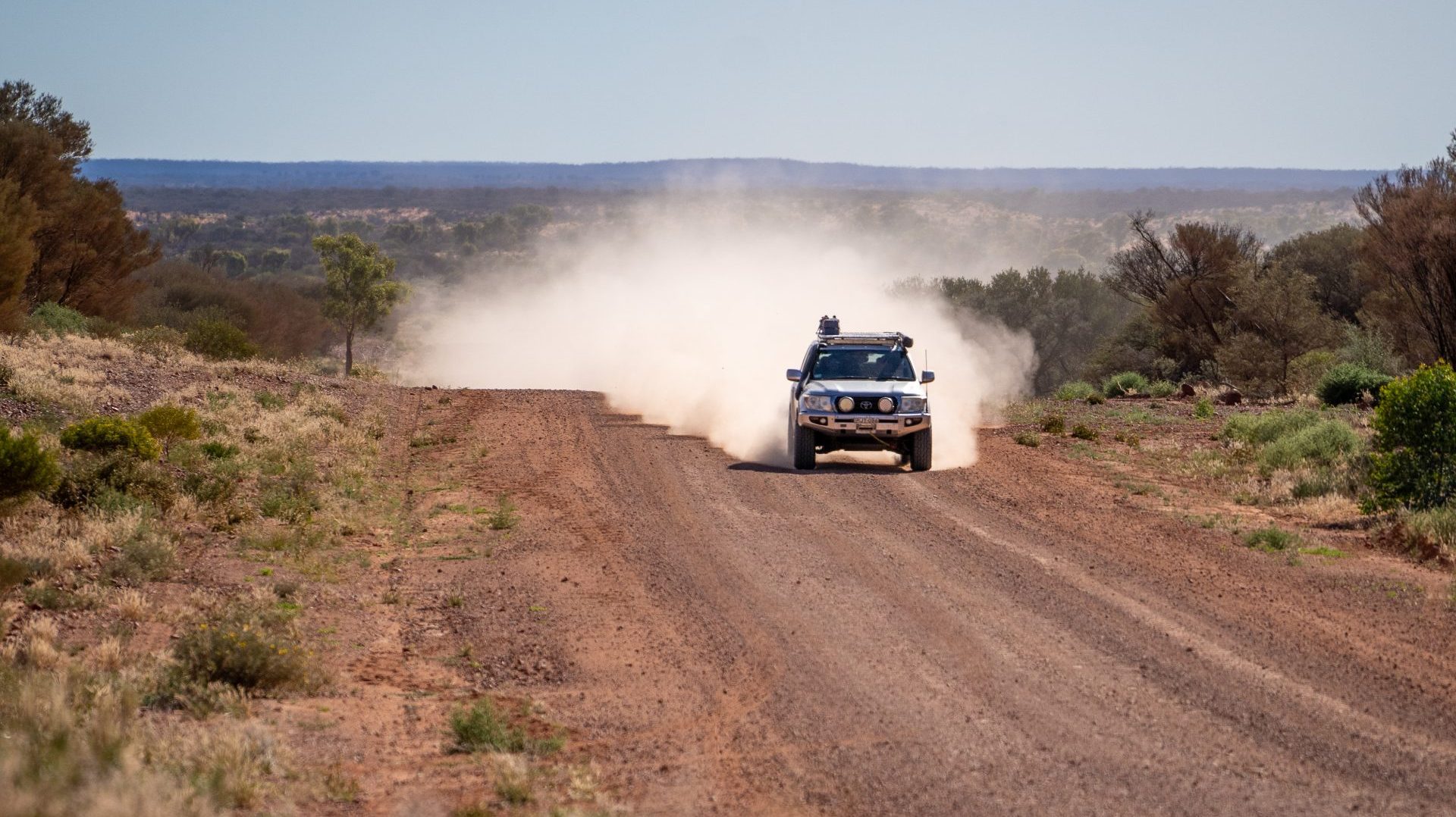
Look at that shiny new LC200 parked in the driveway, it’s glorious. Comfortable, capable, it’s got a lifetime of outback roadhouses and remote campsites in store for it. Or maybe it’s a Prado, an Everest, could even be an old HiLux. It makes no difference really. Your needs as a bona fide outback traveller couldn’t be further from the hardcore weekender if you tried. A full steel bull bar up front and the back full of fridges and lithium power is a world away from a bush basher.
A mile of articulation isn’t going to make that beer at the Birdsville Hotel any more enjoyable, and you’re happy to spend a little more if it means you hop out of the car at the end of a long day with a spring in your step, and not a tired back from being beat senseless. The outback tourer puts comfort and reliability above all.
There is zero practical reason why an outback tourer should be lifted more than 50mm. Any extra over that is just asking for trouble with expensive arms, higher fuel consumption thanks to an increased frontal profile, more body roll, and more watchful eyes looking at you for defects in unfamiliar towns. Keep it low, and spend big on shock absorbers. The more you spend, the better it’ll ride. It’s as simple as that.
Fancy shocks will not only smooth bumps and corrugations out far better, the increased oil capacity you’ll get with remote reservoir shocks will help stave off the dreaded shock fade as well keeping you moving at the speed you decide, not the speed your shocks decide for you. Your springs will need to be rated for constant loads. If you can, save your suspension selection ‘till last so you can run over the weigh bridge and get exact weights to ensure your springs match your exact needs.
A high end U.S. sourced remote reservoir shock absorber paired with the correct springs will make your 4×4 float like a Cadillac on even the harshest outback tracks. You’ll get rattled around far less on corrugations. Bounced around less dropping into washouts on the beach. And you’ll maintain control far better in uneasy terrain. The comical amounts of money you’ll spend on the shocks will balance out by not needing fancy adjustable arms thanks to the low lift.
Articulation will suffer with a setup like this. You’ll need to keep your factory swaybars, run stiff springs to cope with the weight, and won’t have that big aggressive look some people love. You’ll also ride rough when your 4×4 is unladen, so if you’re not loaded up most of the time consider airbags in the rear for variable spring rates.
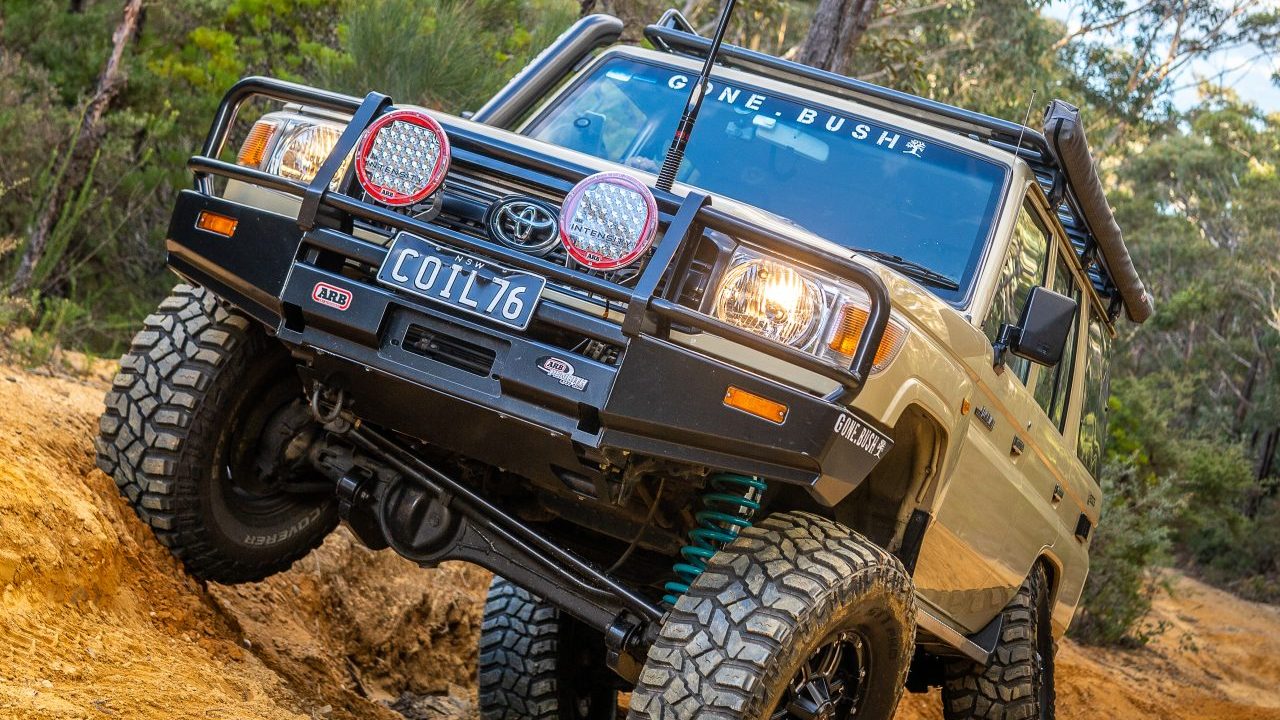
Too old to spend your Friday night’s beating your 4×4 into a pulp, not old enough to spend the next three month’s finding the perfect campsite on Fraser Islands West Coast, your 30s and 40s is all about compromise. Your dual cab ute might serve jobsite duties Monday to Friday, or spend its time doing the school drop off then parked outside the office. Either way when the weekend comes it’s time to lock the hubs and make the most of the weekend.
You’re not about to explore every inch of the Gibb River Road, or snake your way up Six Stage, but it doesn’t mean you don’t love a technical wheel and dirt road touring. You need something that’ll do it all. Loaded or unloaded. Comfortable for the long haul, and capable for when things get tougher. And most of all, it’s gotta be budget friendly. Let’s be honest, $2k worth of shocks and $8k towards that bathroom renovation you’ve been meaning to do is going to make you sleep better at night than the very best suspension you can possibly buy.
Your HiLux/Triton/Navara/Ranger/DMax/BT50 is your pride and joy so needs to be able to do it all. Let’s dial in three inches of lift here to help big tyres fit without needing to cut guards. You’ll need adjustable upper control arms and lifted struts up front. Entry level remote reservoir or even foam cell shocks will help improve handling without breaking the bank and allow decent articulation up front. Keep the stock swaybar and fit a set of quick disconnects. In the rear, tick the box for a set lifted leaf springs with the lowest weight rating you can get away with unladen and fit up a set of adjustable airbags for when you’re loaded up. If you’re sporting a canopy, or tub rack with a roof top tent up top eye off an aftermarket rear swaybar too.
A do-it-all suspension without breaking the bank? What’s not to love! The setup above will give you versatility, off-road ability, and everyday comfort so it doesn’t feel like you’re driving an old bus. Spec it right down to suit your budget too. A set of two-inch lifted struts and some lift blocks in the rear will get you out on the tracks for less than the price of a swag.
There’ll be zero bragging rights with a setup like this, and the less you spend the rougher the ride will be. If you choose to go a heavy duty spring setup instead of an air-bag setup you’ll save even more but ride even worse. There’s no free lunches when it comes to suspension.
Nice work and spot on. So few people seem to understand the importance of high oil capacity, good quality shock absorbers for sustained running on corrugations.
While you’re at it, maybe you could point out the advantages of full time all wheel drive vs part time 4×4 for outback touring (aka, corrugations!). When the surface is constantly changing from low traction to high traction and everything in between, a part time 4×4 in 4H will soon be winding up it’s driveline and leave you wondering why it’s such a pig of a thing that doesn’t like turning around corners. It’s a real hassle when you’ve got 800km to cover, and your alternative is to constantly switch between 2H & 4H, or leave it in 2wd and watch your traction control light blinking at you while it robs you of momentum.
Full time all wheel drive though- as found in most wagons and only a couple of utes- will leave you sure footed all day and won’t flinch when the road surface goes hard or back to bitumen. This, combined with high-end suspension, long fuel range, correct tyres & tyre pressures are the fundamentals of covering big km in the outback.
It’s a shame that there’s not one 4wd on sale today that ticks all of these fairly simple boxes, but I guess that’s why we all enjoy building our ‘rigs’, and reading articles like these.
It would be interesting to see your comments on the 2 types of driving, comfort or busting a gut, if you have Jeep with airbag suspension that can lift 2″ while driving.